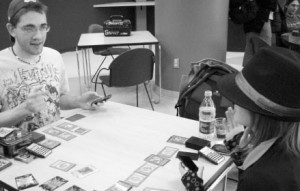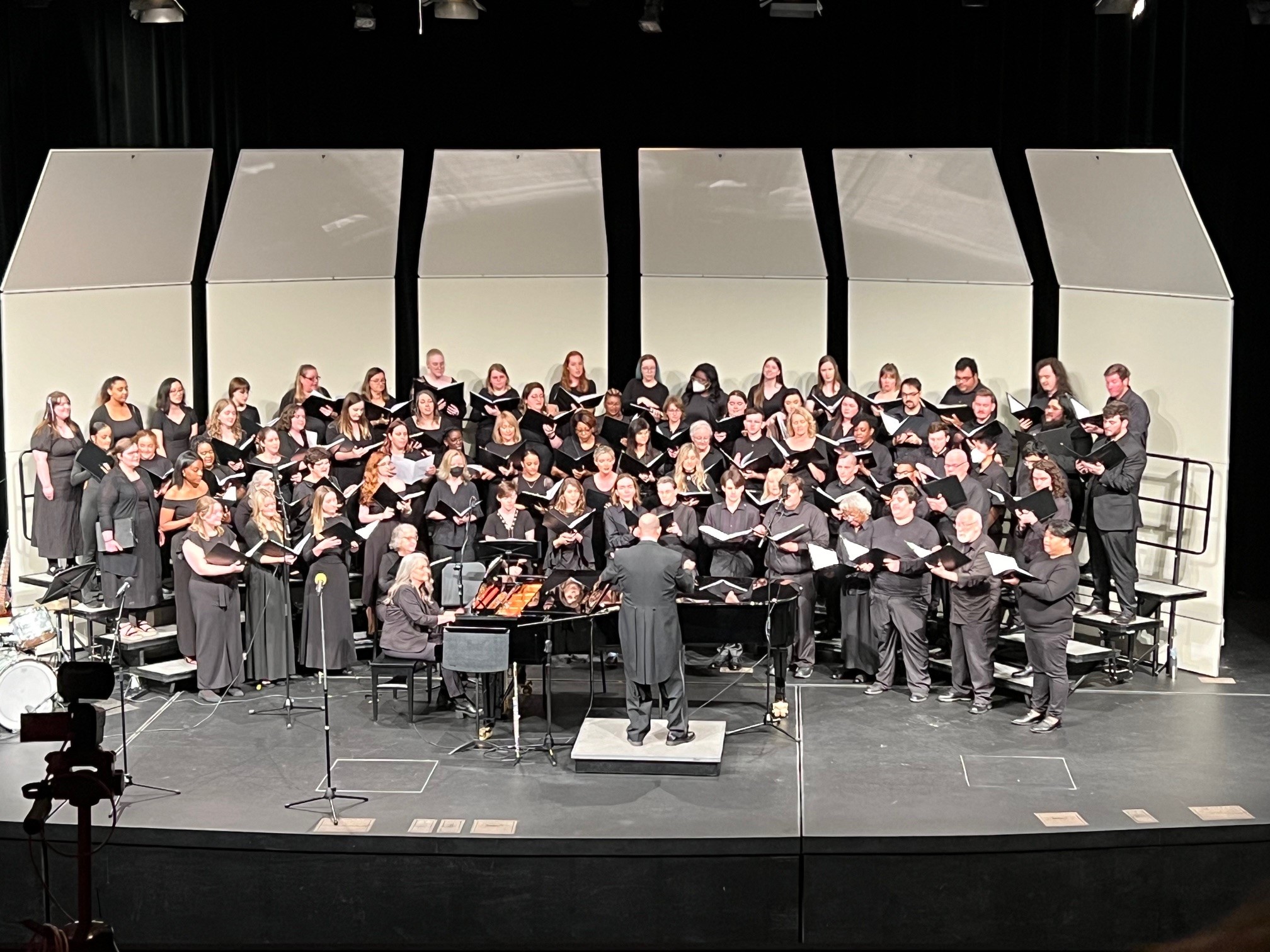A day in the life of the cafeteria’s trading card community

By: Kavahn Mansouri
-Art & Life Editor-
STLCC-Meramec students Aaron Roger, Lindsay Willis and Nick Koenig sit around a table shuffling several decks of cards, discussing the rules of their next game. Willis pulls out her point calculator ,preparing for the next round while Koenig and Roger discuss their strategies. The game starts, the three minds go to work, and simple playing cards become tools of battle.
Roger, Willis and Koenig can be found “dueling” with Yu-Gi-Oh! playing cards almost every day they have classes. The trio spends most of their time with the rest of the gamers, Rodger said. The gamer group, according to Roger, has been at Meramec since before any of the three enrolled.
“There was already a group of people here. People just notice and come over. I knew some friends from last year because I had friends who came here from high school. That’s pretty much how it works,” Roger said.
“We always sit at these tables, and when people start showing up, we migrate into the other area,” Koenig said.
“Like an infection,” Roger said.
The three began sharing stories about how they started playing Yu-Gi-Oh! Willis said that she joined on a whim.
“Originally, the last time I played this was fifth grade, and I came here and saw some boys playing with it. I came over and said, ‘Hey,’ and they said, ‘Let’s build you a deck,’” Willis said.
Koenig also shared how he got into the game.
“When I first started hanging out around here last semester, everyone was welcoming. Guys were like ‘You want to duel with us?’ and then it’s like ‘You suck. Get new cards’,” Koenig said while laughing. “I used to play when the game first started, it wasn’t till last semester when I came over here and got back into it.”
Willis said that since joining the group, the people in it have become like a second family.
“I call them my Yu-Gi-Oh! family. It’s very important to me; they talk to me more than my real siblings,” Willis said.
“It’s our family away from home,” Koenig said.
Former STLCC student Carvaughn Wilson walks over to the group and takes a seat, filling the empty chair at the table. A game is under way in which Willis has been eliminated, so he is forced to act as a spectator. Roger and Koenig refer to him as an “original” or one of the founding members of the Yu-Gi-Oh! group at Meramec. Wilson said that matches can last from two minutes to 10, and that there are three duels to each match.
Koenig said that depending on what day it is, a player can get up to five or six matches in.
“On Mondays, Wednesdays, Fridays, more people are here, but then on Tuesdays and Thursdays, people won’t show up ‘till later. But on average, I would say if everyone’s in the mood to duel, if everyone’s like ‘OK, I’ll duel you next,’ people can get in five or so duels,” Koenig said.
According to Willis, while some players build their decks just to win, players like herself build their decks in themes. Willis’ explains that she has a feminine card theme, most of which have art that reminds Willis of angels.
“For me I have lady cards, pretty cool, pretty good effects. You build them yourself and it makes them personal. You can’t just go out and buy a deck. There’s a lot of work to be put in, it’s a game of chance and strategy,” Willis said. “At first I had fairies, but I’m really interested in angels. I’m an artist, and for my AP Studio Art concentration I painted angels, so of course you always go with something you like ‘cause what’s the point of going with cards that are ugly?”
Willis said that she has a personal connection with her cards, and she feels there’s a sense of responsibility to take care of them.
“They’re like little warriors, and it’s your responsibility to not make them die. There is a little sense of pride when you actually win, because you’ve created something that won. It’s not only more powerful than your opponent but you can outsmart them, too, with elaborate traps, so I take pride in it [my deck],” Willis said.
The Meramec students who make up this community said they trade cards. Some cards, depending on how rare they are, can be sold for varying amounts of money. Some players trade cards of equal value, and some even sell to local stores and on eBay.
Koenig said that there are several different features that change the value of cards, making them less and more valuable.
“It’s the same idea as collector’s items. What makes something collectors? How often was it printed? How long ago was it printed? It’s the same with these cards, but with the cards it’s more like how useful is it? Some have greater use than others and then there are cards that have use in our specific decks,” Koenig said.
According to Koenig, their group is like any other group, there are leaders and new people, or “noobs” as Koenig put.
“When I came here, it was like ‘OK, this is the way it is, this is the game, and this is the totem pole.’ You’re here on the totem pole, and no one enforces it, but there have been people who come in and say, they have done this and this and this, but they have to realize that they have to prove themselves,” Koenig said.
Koenig said that it is not that the group doesn’t haze new members, but instead helps them build their decks and understand the game.
“It’s not hazing. When new people come here everyone who knows about the game will say ‘Your deck doesn’t seem to be going well, well you shouldn’t be running this or this, try and find these cards that will help your deck run faster,’ and it’s kind of like training,” Koenig said.











